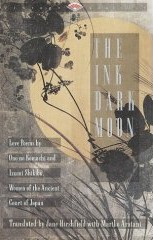 Index of Poetry.
Index of Poetry.
 Books of Poetry Form.
Books of Poetry Form.
 How to Write Poetry.
How to Write Poetry.
 Latest books read.
Latest books read.
 Haibun.
Haibun.
 Haiga.
Haiga.
 Haiku.
Haiku.
 Hay(na)ku.
Hay(na)ku.
 Rengay.
Rengay.
 Renku.
Renku.
 Tanka.
Tanka.
 Tanka surveys.
Tanka surveys.
 Tan-renga.
Tan-renga.
 Concrete.
Concrete.
 Fib.
Fib.
 Ghazal.
Ghazal.
 Lai.
Lai.
 Pantoum.
Pantoum.
 Prose poem.
Prose poem.
 Rondeau.
Rondeau.
 Rubáiyát.
Rubáiyát.
 Sestina.
Sestina.
 Skaldic verse.
Skaldic verse.
 Sonnet.
Sonnet.
 Terza rima.
Terza rima.
 Triolet.
Triolet.
 Tritina.
Tritina.
 Villanelle.
Villanelle.
 Yuki Teikei Haiku Society:
Yuki Teikei Haiku Society:
 Join.
Join.
 GEPPO magazine.
GEPPO magazine.
 Annual anthologies.
Annual anthologies.
 2007 Asilomar Haiku Retreat.
2007 Asilomar Haiku Retreat.
 Toward an Aesthetic for English-Language Haiku by Lee Gurga.
Toward an Aesthetic for English-Language Haiku by Lee Gurga.
 2004 Pescadero Haiku Weekend Workshop (including exercises) with Christopher Herold.
2004 Pescadero Haiku Weekend Workshop (including exercises) with Christopher Herold.
 El Poema Concreto.
El Poema Concreto.
 Haiku by Bashō.
Haiku by Bashō.
 Haiku by Shiki.
Haiku by Shiki.
 Haiku by J. Zimmerman.
Haiku by J. Zimmerman.
 Tanka by J. Zimmerman.
Tanka by J. Zimmerman.


| Modern Japanese Tanka edited by Makoto Ueda. Twenty Japanese poets develop the tanka in the 20th century. |

